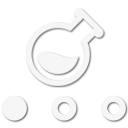
Enthusiast III
Back in the day, when adding a second battery the choices for battery isolators were diode based (creates a voltage drop), Relays (sometimes cannot handle the load over time), or switched (have to be manually switched).
I am planning on adding a smaller second battery for communications gear, car stereo, and a few LED area/work lights.
I am looking for a battery isolator that is simple and reliable. Affordable would be the hat trick!
I am sure modern tech has created better solutions and am curious what you are using, along with the pros and cons.
Thank you, TR
I am planning on adding a smaller second battery for communications gear, car stereo, and a few LED area/work lights.
I am looking for a battery isolator that is simple and reliable. Affordable would be the hat trick!
I am sure modern tech has created better solutions and am curious what you are using, along with the pros and cons.
Thank you, TR






